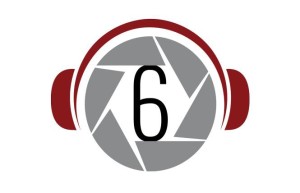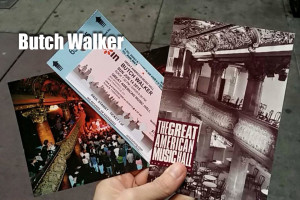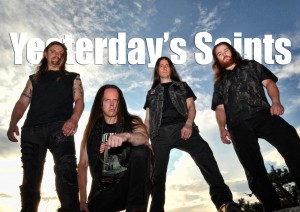The Art of the Mix Tape
6 min readEver since I was a kid in elementary school, I have been fascinated with the art of making the perfect mix tape. I think my first official mix tape was created on New Years Eve, 1985. I remember sitting by the radio, with my finger on the pause button anticipating Kasey Casem playing my favorite songs. It was the top 40 songs of 1985 and I waited patiently for each song. It took hours to create, but it was worth it. Careless Whisper by Wham was the last song on that cassette (as it was the number one song in 1985) and, after that, my love for creating the perfect mix tape was born.
THE HISTORY
The mix tape is a powerful way for consumers and wannabe rock stars to create music. In essence, the mix tape was born when DJ’s on New York City street corners rocked block parties in the mid ’70s as they’d spin records back to back with seamless transition. These “live” versions of the common mix tape brought the crowds to their feet and the party didn’t start until the DJ mixed it up. Every school kid envied the DJ that could find the best collections of songs and spin them back to back. This, of course, led to the sampling of songs (invented by DJ Kool Herc and perfected by Grand Master Flash) mixed together to form the backbeat of almost every rap song ever. The idea of mixing songs appealed to partygoers and soon enough, it was possible for everyone to try this at home. The mix tape became a staple of every young person’s life as soon as the cassette recorder was introduced. Soon, anyone and everyone had the ability to mix and create just like Kool Herc and Grandmaster Flash.
THE MAKING OF
“Now the making of a good compilation tape is a very subtle art. Many dos and don’ts. First of all, you’re using someone else’s poetry to express how you feel. This is a delicate thing.” – John Cusack (from High Fidelity)
Over the years, mixing music and recording it has evolved from hitting record and play on your cassette deck to creating a playlist on your computer and burning a CD. There are two different approaches to making a mix tape: the planned approach and the spontaneous approach. One can be taken very seriously and the other can be created on a whim. I generally spend some time and thought creating a mix tape. The process usually started with logging songs, artists and song length followed by pairing up the right songs together on paper. A planned out approach may involve some sort of a theme; a grouping of songs that have something in common. The old stand by (one that almost everybody has created) is the mix tape of sentimental songs for that significant other. The gift of a mix tape is invaluable because of the sentiment and the amount of effort that goes in to making it. Other themes could be songs about a place such as New York with songs by Frank Sinatra (“New York, New York”), Billy Joel (“New York State of Mind”), Don Henley (“New York Minute”) and U2 (“New York”). Other examples could be a mix tape of popular and favorite songs for that time period, a “covers” mix of remakes, old school mix (songs from your youth), or a theme of one word titled songs.
The spontaneous music mix sometimes leads to an unexpected masterpiece. This can happen at a moment’s notice. There have been many times when I wanted to hear a song saved in my iTunes player in the car. Rather than just burning one song to a CD, a mix tape is born. So, quickly, you begin to put some songs in a playlist folder and, before you know it, a spontaneous mix tape is born. It’s that simple. Regardless, the making of a mix tape must not be under appreciated. It is taking someone else’s art and morphing it into your new, unparalleled creation, no matter how much time or effort went in to the making of it.
THE NOSTALGIA
The mix tape can bring you back to a time and place long forgotten and can stir up memories or sensations often ignored. I made a series of mix tapes, titled The G.W. Collections all the way through high school. Then I went to college and thus the creation of the Clueless Wonder mix tapes evolved. These mix tapes did not leave my 1990 Plymouth Sundance. They were sun-faded and spectacular. The other day, I had to borrow my dad’s truck which has a tape deck in it. I decided to dig out some old mix tapes and I found Clueless Wonder Vol. 4 (created sometime in the mid ’90s). It was majestic. I had a moment of clarity. Songs from Live (“Waitress”), Pearl Jam (“Even Flow”) and Poor Old Lu (“Where Were All of You”) stirred memories of college and the 6-hour drive to and from home.
My final mix tape (before the evolution of the CD recorder/player) was the Genesis Project and no, it had nothing to do with the band Genesis. Once I purchased my Phillips CD recorder in 1999, the mixtape became the mix compact disc.
My first official mix CD (or as I usually call them, The Compilation CD) was titled Dry Bones One. It was a hybrid of an older mix tape I once made, which featured (at the time) my top ten favorite songs of all time, with some other gems there also. One of my favorite CD mixes of all time just happens to be Dry Bones Two. (I am a firm believer that all good mix tapes/compilation CD’s come in threes).
Here is a track listing of Dry Bones Two:
01 | Also Sparch Zarathustra (theme from 2001: A Space Odyssey)
02 | Bullet the Blue Sky – P.O.D.
03 | Mia – Chevelle
04 | Take a Picture – Filter
05 | Where the Streets have no Name – U2
06 | Grylliade – The Prayer Chain
07 | 58 – The Prayer Chain
08 | Let Down – Radiohead
09 | Solomon the Mystic – Sixpence None the Richer (from Tickets for a Prayer Wheel EP)
10 | Road to Zion – Sixpence None the Richer (cover version of the Petra classic)
11 | No New Kind of Story – Starflyer 59
12 | The Man who Sold the World – Nirvana (Unplugged in NY)
13 | Still Remains – Stone Temple Pilots
14 | PK – Johnny Q. Public
15 | White, discussion – Live
Ironically, mix tape playlists become such a huge part of our music that often, when we hear a song, whether on the radio or on that artists CD, we expect to hear the next song on the playlist next. Almost every time I hear “Streets…” by U2, I expect to here The Prayer Chain next.
THE YEARBOOK
I love the idea of the mix tape. It can evoke so many memories of experiences past. It reminds you of a time that was. I remember hearing an interview with DJ Shadow, the famed turntable specialist. He was talking about how he has made a mix tape for each month, dating back to high school. How incredible is that? The mix tape is almost like a yearbook, without the pictures. That is what makes the art of mix taping so special. Every compilation I make has a little piece of me in it. My heart and soul are poured out through someone else’s poetry, prose and instrumentation. It is my way of showing my creativity to any and all, even though I’m usually the only one who listens to them. The mix tape is an expression of my soul, for all to see and hear. It is a part of me and tells the stories of my life. It is a history book, a record book, so to speak, that embraces all that is good and noble and pure in the world. Music is universal. The mix tape is an example of the harmony we all desire.






